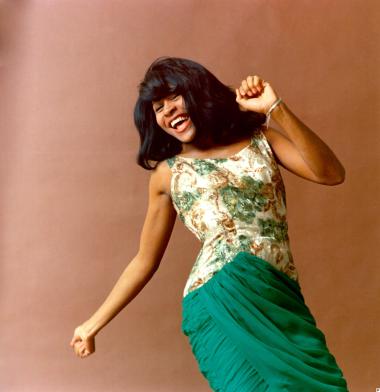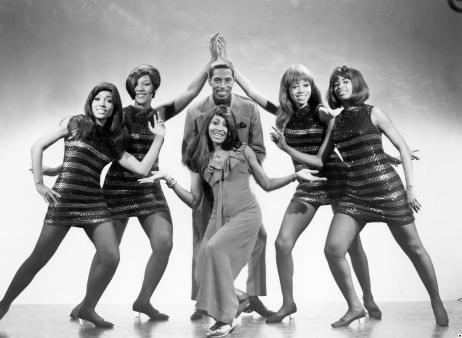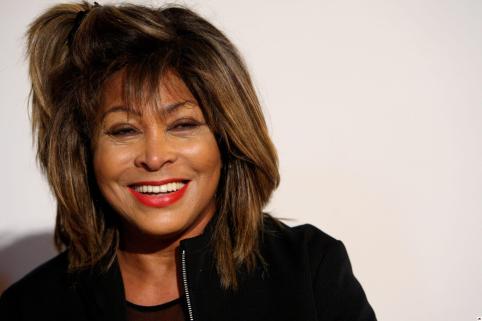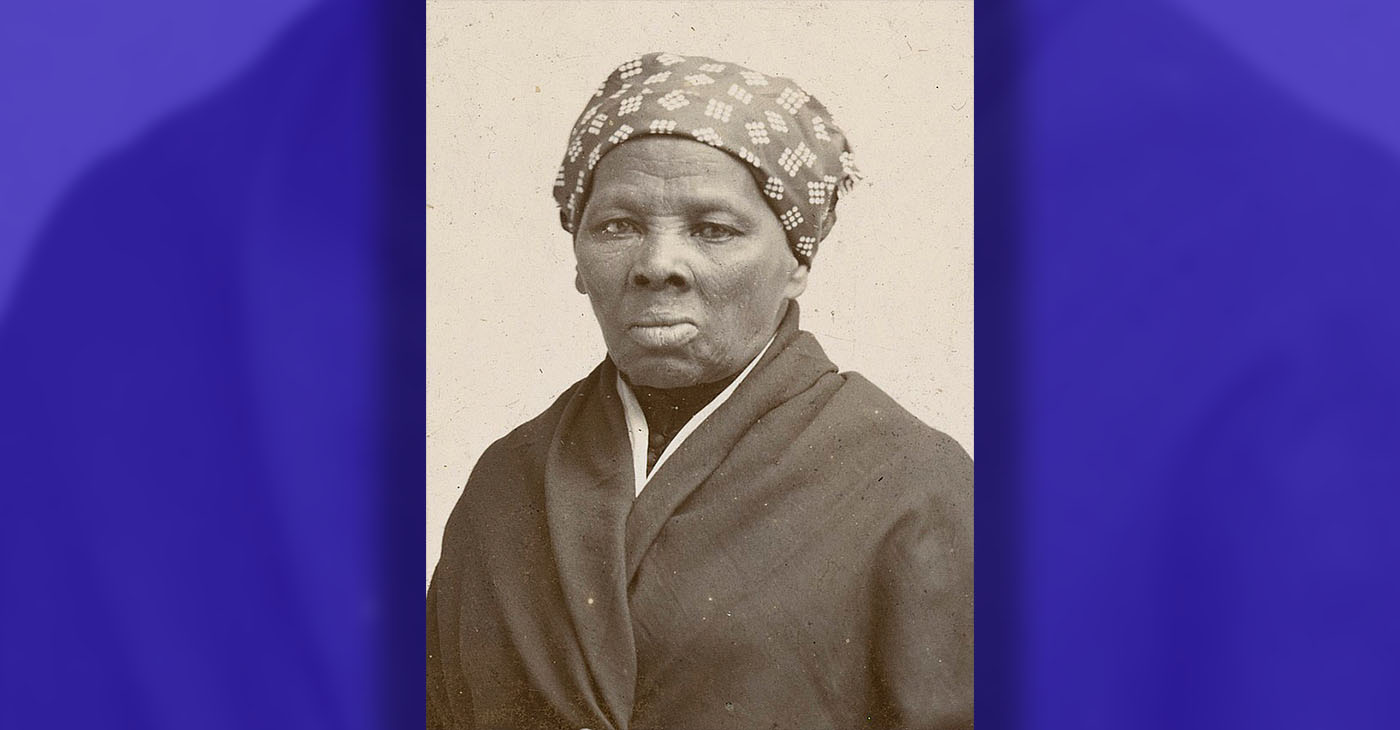#NNPA BlackPress
Remembering Tina: The Legendary “Queen of Rock ‘n Roll” Passes Away at 83
Tributes are pouring in for legendary singer, songwriter and actress Tina Turner, who died last Wednesday. She was 83. “Tina Turner, the ‘Queen of Rock’n Roll’ has died peacefully today at the age of 83 after a long illness in her home in Küsnacht near Zurich, Switzerland,” her publicist said on last Wednesday. “There will […]
The post Remembering Tina: The Legendary “Queen of Rock ‘n Roll” Passes Away at 83 first appeared on BlackPressUSA.

Tributes are pouring in for legendary singer, songwriter and actress Tina Turner, who died last Wednesday. She was 83.
“Tina Turner, the ‘Queen of Rock’n Roll’ has died peacefully today at the age of 83 after a long illness in her home in Küsnacht near Zurich, Switzerland,” her publicist said on last Wednesday. “There will be a private funeral ceremony attended by close friends and family. Please respect the privacy of her family at this difficult time.”

1964: Tina Turner of the husband-and-wife R&B duo Ike & Tina Turner poses for a portrait in 1964. (Photo by Michael Ochs Archives/Getty Images)
She was born Anna Mae Bullock on November 26, 1939, in Brownsville, Tennessee. She grew up in Nutbush, a tiny unincorporated community with a population of 259. Her parents, Floyd and Zelma Bullock were sharecroppers; Floyd supervised the harvests on the white-owned Poindexter farm. And the farm produced plenty. “Daddy’s garden must’ve covered an acre: Cabbages, onions, tomatoes and turnips, sweet potatoes, watermelons — we planted it all, and that garden fed us during the summer,” she wrote in her autobiography, I, Tina. “We had fresh eggs from our chickens and fresh milk from our cows.”
Anna Mae and her older sister Alline grew up in relative comfort. “Were we poor? I don’t remember being poor. My father was the top man on the farm; all the sharecroppers answered to him, and he answered to the owner. Daddy was in charge,” she later recalled. “We always had nice furniture in our house, and Alline and I always had our own separate bedroom.”
What they did not have was much in the way of closeness or affection. “I had no love from my mother or my father from the beginning, from birth,” she says in I, Tina. Her parents were often at odds and didn’t love each other: “Apparently, my mother had taken my father away from another girl — just out of spite […] they never really loved each other. They fought from the beginning,” she recalled. Those fights often turned physical.
When America entered World War II in 1941, Floyd and Zelma got jobs in the war effort. He worked as a laborer for a secret project; Zelma worked as a domestic in Knoxville, where the two stayed for over two years. The children stayed back home with grandparents. After the war, the Bullocks reunited with their children in Knoxville, then returned to Nutbush. Anna Mae attended Flagg Grove Elementary School from grades one through eight. That one-room schoolhouse is now the Tina Turner Museum.

CIRCA 1969: Tina Turner of the husband-and-wife R&B duo Ike & Tina Turner sings during a recording session in circa 1969. (Photo by Michael Ochs Archives/Getty Images)
When Anna Mae was 11, her mother abruptly moved to St. Louis. Zelma had finally left Floyd — and her kids. Shortly afterward, her father remarried and moved to Detroit, leaving Anna Mae and Alline behind. Anna Mae started working as a housekeeper and babysitter for the Hendersons, a young white family.
She and Alline moved to stay with their maternal grandmother for a time before Anna Mae moved back to the family farm with her paternal grandmother (whom she called “Mama Georgie”). But when Mama Georgie died, Anna Mae moved to St. Louis with her mother and sister. It was in St. Louis where Ike Turner and the Kings of Rhythm came to play.
Ike (born Izear Luster Turner in 1931) had a band: saxophonists, a guitarist, a drummer, and his nephew on bass. Ike played piano and guitar. The band played at clubs in east St. Louis. At that time, 17-year-old Anna Mae and 20-year-old Alline had started going out to local clubs. One night they went to the Club Manhattan, where the band was playing.
Transfixed by Ike’s guitar playing, Anna Mae returned over the next several weeks. People would get up and sing with the band at times during their shows, and Anna Mae longed to do the same. One night, she got her chance. While Ike was playing on the organ between sets, Anna Mae started singing along as Ike played the B.B. King song “You Know I Love You.” Ike was so blown away by her voice that he jumped offstage and asked if she knew any more songs. Anna Mae started singing with the band.
Zelma Bullock found out — and hit the roof. “She hit me a backhand lick to the side of my face,” Tina wrote later, “and when I saw it had given me a nosebleed, I nearly hit her back.” Zelma did not want her daughter out with Ike Turner. But he charmed her when he visited the house, promising that he’d take care of Anna Mae. Zelma agreed. Anna Mae resumed performing.

Husband-and-wife R&B duo Ike & Tina Turner pose for a portrait with their back up dancers “The Ikettes”, 1968. (Photo by Michael Ochs Archives/Getty Images)
“From then on, Ike and I were like brother and sister,” she wrote. He bought Anna Mae stage clothes and taught her about voice control and performance. They were strictly platonic at this point: Ike was living with a woman named Lorraine Taylor, and Anna Mae was falling for Ike’s saxophonist Raymond Hill. “I moved in with Raymond for a while,” she said years later. “We talked about marriage or whatever, but it didn’t happen. Soon he was gone.”
Soon she was pregnant. Anna Mae gave birth to their son Raymond Craig on Aug. 20, 1958. Zelma was displeased by her daughter being a teenage mother, so Anna Mae moved out into her own apartment and took a day job as a nurse’s assistant at Barnes-Jewish Hospital, the largest hospital in Missouri. But she would still sing with the band on dates. She even recorded with them; on the 1958 song “Boxtop,” she earned her first recording credit (billed as “Little Ann”).
Shortly thereafter, her relationship with Ike changed. They had been close friends: sometimes Anna Mae would even sleep over at Ike and Lorraine’s place. But while Ike was broken up with Lorraine, one of the musicians threatened to come into Anna Mae’s room (there were no locks). Instead, she shared a bed with Ike — who had more than just sleeping on his mind.
As their personal relationship turned romantic, their working relationship also changed. In 1959, Ike wrote “A Fool in Love” for Art Lassiter, whom he’d chosen as the band’s lead singer. But Art never showed up for the recording session. So Ike had Anna Mae sing on the demo. The demo tape found its way to Juggy Murray, head of Sue Records. He told Ike the song worked better with a girl singer and signed Ike to a record contract. Ike changed Anna’s name (Tina rhymed with Sheena, Queen of the Jungle, one of his favorite TV shows) and the name of the band: to the Ike and Tina Turner Revue.

American singer, songwriter, and actress Tina Turner performs at the Brighton Centre, Brighton, UK, 11th March 1985. (Photo by John Rogers/Daily Express/Hulton Archive/Getty Images)
Anna Mae had reservations about the name change — and their relationship. “I didn’t want our relationship to go any farther,” she later wrote. I knew it could never work out between us.” She told Ike how she felt; he grabbed a shoe stretcher and beat her with it.
Tina felt trapped: “As horrible as he treated me, I still felt responsible for letting him down,” she told Rolling Stone in 1986. “And I was afraid to leave. I knew I had no place to hide, because he knew where my people were. My mother was actually living in Ike’s house in St. Louis. My sister was living in an apartment basically rented by Ike.”
So she stayed — and became Tina Turner.
“A Fool in Love”
By January 1960, Tina was pregnant — this time by Ike (who had gotten back together with Lorraine). Tina developed hepatitis and then jaundice; she spent six weeks in the hospital. Meanwhile, the record that would make her a star was gaining traction. Ike decided to go on tour. He snuck Tina out of the hospital and onto the road.
“A Fool in Love” was released in July 1960. In August, it hit No. 2 on the R&B charts, and in October it peaked at No. 27 on the pop charts — just as Ike and Tina were appearing on “American Bandstand.” Despite being eight months pregnant, Tina was doing shows in Vegas, dancing and singing with her background singers (whom Ike named the Ikettes). Only in Vegas did Ike realize Tina might need to visit a hospital.
They hightailed it to L.A., where Tina gave birth to their son Ronald Renelle on Oct. 27, 1960. A fed-up Lorraine left Ike for good. Once Tina was out of the hospital, she did a show in Oakland before taking two weeks to recover. But recovery was difficult. She was already unhappy by 1961, writing later that Ike was “totally unpredictable.” “Out of nowhere, he would leap up from a couch and walk right up to you and —pow! And you’d go, ‘What did I do? What’s wrong?’ Pow! again,” she wrote. “It was insane. It got to be that I always had a black eye and a busted lip — that was the standard beat-up.”
But she still accepted his proposal. One night, during a moment of tenderness, Ike asked Tina to marry him. She said yes “because if you said no to Ike, you were going to get beat up a few days later.” They rode to Tijuana, found a justice of the peace and married in 1962. Ike bought a house in L.A.; he and Tina brought their son Ronald, Tina’s son Raymond Craig, and Ike’s sons Michael and Ike, Jr. from St. Louis to live with them. But they were rarely home. Ike & Tina had several more hit singles, including “I Think It’s Gonna Work Out Fine” (No. 2 R&B, No. 14 pop) in 1961. But most of their income came from constant touring.

ZURICH, SWITZERLAND – MAY 14: Tina Turner smiles during the presentation of the music project ‘Beyond – Three Voices For Peace’ on May 14, 2009 in Zurich, Switzerland. The CD contains a spiritual message by Tina Turner. (Photo by Miguel Villagran/Getty Images)
“River Deep, Mountain High”
In 1966, record producer Phil Spector negotiated a contract with Ike to record with Tina. His song: “River Deep, Mountain High.” “I loved that song,” Tina said in her autobiography. “Because for the first time in my life, it wasn’t just R&B — it had structure, it had a melody.” The song failed in the United States but was a smash overseas, peaking at No. 3 on the UK charts. Within months, Ike and Tina were touring with the Rolling Stones. Band members Mick Jagger and Keith Richards became Tina’s lifelong friends.
But Tina’s depression deepened after she and Ike returned to America. Ike’s violence and philandering continued; he got Ann Thomas, one of the Ikettes, pregnant. “When I found out that Ann was pregnant by Ike, I lost all feeling for him as my husband,” she later wrote. That was it.” Worse yet, Ike started using cocaine, which made him even more violent and unpredictable: “Ike was beating me with phones, with shoes, with the hangers, choking me, punching me—it wasn’t just slapping anymore.”
In 1968, Tina attempted suicide by swallowing 50 Valium; she had to have her stomach pumped. But when she got out of the hospital, Ike made her go right back to work. And when Tina developed bronchitis a year later, he was unrelenting. Tina kept working, and it turned into tuberculosis. But after a couple weeks in the hospital, she was back on the road.
In 1970, at Tina’s encouragement, they shifted musically, from R&B to rock & roll. The move paid off with the 1970 albums Come Together and Workin’ Together. The first album featured a cover of Sly Stone’s “I Want to Take You Higher.” The second became their highest-charting album. It contained their cover of a song by rock band Credence Clearwater Revival: “Proud Mary.” Ike and Tina remade the song, with Tina’s famous “nice and easy” opening. Their version became their biggest hit ever, soaring to No. 4 on the Billboard charts and selling over a million copies. It won them a Grammy for Best R&B Performance.
Tina wrote the group’s last major hit, a song about her hometown: “Nutbush City Limits” (1973). But the hits soon dried up. Ike became more volatile as his cocaine addiction worsened, while Tina discovered Buddhism and used chanting as a form of solace. In 1974 she landed a role in Tommy (1975), playing the Acid Queen in the filmed version of the Who’s rock opera. “It was a small part,” she wrote later, “but it was my part. It gave me strength. I could feel myself growing.”

NEW YORK, NEW YORK – NOVEMBER 07: Tina Turner and Adrienne Warren speak during “Tina – The Tina Turner Musical” opening night at Lunt-Fontanne Theatre on November 07, 2019 in New York City. (Photo by John Lamparski/Getty Images)
That growth annoyed Ike, who resented Tina succeeding without him. Things got worse: he once threw a pot of boiling hot coffee in her face, causing third-degree burns. As the boys neared adulthood and the abuse continued, Tina found fewer reasons to stay. Gradually, she started leaving: once for three days, then for two weeks. Upon returning, she told Ike: “I really cannot stay with you any longer.”
Ike didn’t listen. He lined up gigs around the time of America’s bicentennial; they’d play in Dallas during 4th of July weekend. On July 3, 1976, they flew to Dallas, where they were scheduled to perform at a Hilton hotel. On the way to the airport, signs of trouble were already brewing: Tina had on a white Yves St. Laurent suit, Ike had a box of chocolates that was melting in the Texas sun. He offered them to Tina; she said no. He backhanded her.
After their flight, they arrived at the DFW airport and rode to the hotel. Inside the limo, Ike backhanded Tina again. This time, she fought back. He kept hitting, and so did she. “By the time we got to the Hilton, the left side of my face was swollen out past my ear and blood was everywhere,” Tina wrote. They went up to their room, where Ike fell asleep. Tina grabbed her toiletry bag and left. She ran out of the back of the hotel, down an alley, and across a freeway. She arrived at the Ramada Inn with just 36 cents and a Mobil gas card, promising the owner that she’d pay him back. He agreed. When she woke up the next morning, it was July 4, 1976 — Independence Day.
Tina filed for divorce later that month; the divorce was finally settled in 1978. (She walked away with just her two Jaguars — and her name.) She started staying at friends’ houses, cleaning them as payment. Then she started working on a new act. When Roger Davies became her manager in 1979, Tina was performing cabaret at nightclubs; he steered her back towards rock. Tina opened for the Stones in 1981.
In 1982, Heaven 17, the British synth-pop band, recruited her to sing a remake of the Temptations’ “Ball of Confusion.” The song led to a new record deal for Turner with Capitol Records. Roger Davies then suggested that she and Heaven 17’s Martyn Ware cut a remake of Al Green’s “Let’s Stay Together.” Tina’s version hit the Top 30 in the U.S. With that, and the support of her friend David Bowie, Turner began recording her Capitol debut, Private Dancer.
Released in June 1984, Private Dancer was critically acclaimed and hit No. 3 on the Billboard album chart, where it stayed for three months. (Blocking it from number one were Purple Rain and Born in the USA.) The album went multiplatinum, selling over five million copies in the U.S. and over 10 million worldwide. The title track hit the Top 10 on both the R&B and pop charts; so did “Show Some Respect.”
The lead single, “What’s Love Got to Do with It?” hit No. 1 in September. It was Tina’s first (and only) number-one hit. At 45, she became the oldest female singer ever to top the Billboard singles chart. And at the 1985 Grammy Awards, “What’s Love” won for Best Female Pop Vocal performance, Song of the Year, and Record of the Year. (“Better Be Good to Me” won for Best Rock Performance.)
That year, Tina played the villain Aunty Entity in Mad Max: Beyond Thunderdome. The film was a box-office hit, and Tina won an NAACP Image Award for best actress. She recorded two songs for the soundtrack: “We Don’t Need Another Hero” (which hit No. 2 on Billboard) and “One of the Living” (which won her another Grammy for Best Rock Performance).
In 1986, Turner released her next album, Break Every Rule. The lead single “Typical Male” also peaked at No. 2, and “Back Where You Started” earned Turner her third straight Grammy for Best Rock Performance. She also published her best-selling autobiography I, Tina. And she found love again, this time with German record executive Erwin Bach.
Bach was assigned to pick her up from the airport in 1985; sparks flew immediately. “It was love at first sight,” Turner told Oprah Winfrey in an interview. “He had the prettiest face. You could not miss it. It was like saying, ‘Where did he come from?’ He was really that good looking.” Despite the age difference (he was 30; she was 46), she and Bach connected. In her 2020 book Happiness Becomes You: A Guide to Changing Your Life for Good, she credited him with teaching her how “to love without giving up who I am.”
“We grant each other freedom and space to be individuals at the same time we are a couple,” Turner wrote. “Erwin, who is a force of nature in his own right, has never been the least bit intimidated by my career, my talents, or my fame. He shows me that true love doesn’t require the dimming of my light so that he can shine. On the contrary, we are the light of each other’s lives, and we want to shine as bright as we can, together.”
And shine she did. In 1987, Turner embarked on her “Break Every Rule” tour, one of the year’s highest-grossing. In Brazil in 1988, she fulfilled a long-held dream by selling out a massive stadium. 180,000 people came to see Tina Turner at the Maracana Stadium in Rio, setting a record for the largest paid concert by a female artist.
The next year, Turner released the album Foreign Affair, which produced one of her most timeless singles, “The Best.” The album title reflected its production in London and Paris. But it also described Tina’s personal life: when she turned 50 in 1989, Bach asked her to marry him. She refused, but the two continued to live together.
In 1993, Tina re-recorded some of her hits for the soundtrack of What’s Love Got To Do With It? (1993), based on her book. She also recorded a new single: “I Don’t Wanna Fight,” her last top 10 hit. Both Angela Bassett and Laurence Fishburne earned Oscar nominations for their portrayals of Ike and Tina Turner.
In 1995, Tina and Bach moved to Switzerland. She toured to support her albums Wildest Dreams (1996) and Twenty Four Seven (1999). Even when she wasn’t performing, she could still sell records: her 2004 greatest-hits album All the Best went platinum, becoming her highest-charting record. In 2008, she embarked on her final tour: a six-month farewell journey around the world. She officially retired in 2009.
In 2013, Turner and Bach finally married, cementing what she called “a long, beautiful relationship — and my one true marriage.” But according to Closer Weekly, Turner suffered a stroke just three months after marrying Erwin. She spent 10 days in the hospital and had to relearn how to walk. She was diagnosed with colon cancer in January 2016. A month later, she underwent surgery to remove the cancerous part of her intestine. But high blood pressure damaged her kidneys.
“By December 2016, my kidneys were at a new low of 20 percent and plunging rapidly. And I faced two choices: either regular dialysis or a kidney transplant,” she wrote in her 2018 memoir, Tina Turner, My Love Story. “Only the transplant would give me a very good chance of leading a near-normal life. But the chances of getting a donor kidney were remote.” Thankfully, Bach donated one of his. “I’m happy to say that, thanks to my beloved husband, Erwin, giving me one of his kidneys, the gift of life, I’m in good health and loving life every day,” she wrote in the book. “I’m also thankful that I’ve not only survived, but thrived, so that I can pass on to you this book containing precious gifts that were given to me — the greatest gifts I can offer.”
She had one last gift for her fans. Tina, a musical based on her life, premiered in London in 2018 and on Broadway the following year. Adrienne Warren, who played the title role, won a Tony in 2020 for Best Performance by a Leading Actress in a Musical. Upon learning of Turner’s passing, Warren paid tribute to the woman she played: “Today I lost a teacher and a mentor,” Warren captioned her post. “Rest, my friend. I love you, Anna Mae Bullock. Thank you.”
“My beloved queen, I love you endlessly,” Beyoncé wrote on her website. “I’m so grateful for your inspiration, and all the ways you have paved the way […] You are the epitome of power and passion. We are all so fortunate to have witnessed your kindness and beautiful spirit that will forever remain. Thank you for all you have done.”
Lizzo paid tribute to Turner with a performance of “Proud Mary” during her tour stop. “Today we lost an icon,” a visibly emotional Lizzo told the crowd at Footprint Center in Phoenix. “I haven’t allowed myself to be sad, I haven’t allowed myself to cry. I don’t want to right now, because I’d much rather celebrate.” She added: “As a Black girl with a rock band, I wouldn’t exist were it not for the queen of rock & roll.”
The post Remembering Tina: The Legendary “Queen of Rock ‘n Roll” Passes Away at 83 appeared first on Houston Forward Times.
The post Remembering Tina: The Legendary “Queen of Rock ‘n Roll” Passes Away at 83 first appeared on BlackPressUSA.
#NNPA BlackPress
Harriet Tubman Scrubbed; DEI Dismantled
A photograph of Harriet Tubman has been removed from a National Park Service webpage about the Underground Railroad.

By Stacy M. Brown
BlackPressUSA.com Senior National Correspondent
A photograph of Harriet Tubman has been removed from a National Park Service webpage about the Underground Railroad. Previously, the page opened with a photo of Tubman and a description that acknowledged slavery and the efforts of enslaved African Americans to escape bondage. That language is now gone. In its place are images of postage stamps and a reworded introduction that refers to the Underground Railroad as “one of the most significant expressions of the American civil rights movement” that “bridged the divides of race.” The updated version does not mention slavery. The change follows an executive order signed by President Donald Trump last month directing the Smithsonian Institution to eliminate “divisive narratives.” A review by The Washington Post found that since Trump’s return to office, dozens of webpages across the National Park Service have been edited to soften or eliminate references to slavery, racial injustice, and the historical struggles of African Americans.
On the website for the Stone National Historic Site in Maryland, mentions of Declaration of Independence signer Thomas Stone owning enslaved people were removed. Elsewhere, references to “enslaved African Americans” were changed to “enslaved workers.” A page exploring Benjamin Franklin’s views on slavery and his slave ownership was taken offline. The Defense Department also removed several webpages related to diversity and minority contributions to the U.S. military, including a tribute to Jackie Robinson’s Army service and content honoring the Tuskegee Airmen, the Navajo Code Talkers, and the Marines at Iwo Jima. Officials later said some content would be republished after public outcry. Nearly 400 books were removed from the library at the U.S. Naval Academy. The list includes Maya Angelou’s I Know Why the Caged Bird Sings, Memorializing the Holocaust, Half American, and Pursuing Trayvon Martin. Officials cited Defense Secretary Pete Hegseth’s directive to eliminate books that promote diversity, equity, and inclusion.
Private companies contracting with the federal government have begun rolling back language diversity and initiatives in response to federal pressure. UnitedHealth Group removed DEI language from its website. Goldman Sachs dropped its diversity requirement for companies it takes public and revised annual filings to reflect “developments in the law.” Bank of America replaced the term “diversity” with “talent” and “opportunity.” Deloitte instructed U.S.-based employees working with federal clients to remove pronouns from email signatures. Coca-Cola, PepsiCo, Disney, Paramount, JPMorgan Chase, Victoria’s Secret, and others have renamed or eliminated DEI programs. Some, like Paramount, cited the need to comply with Trump’s executive orders.
Target has faced financial and reputational fallout following its reversal of DEI commitments. The company has lost over $12.4 billion in revenue and faces multiple lawsuits related to its shifting policies. Rev. Jamal Bryant launched a national “Target Fast,” urging community mobilization. Separately, the NAACP and the National Newspaper Publishers Association (NNPA) initiated public education and selective buying campaigns to increase pressure on the retail giant.
“Black consumers helped build Target into a retail giant, and now they are making their voices heard,” said Dr. Benjamin F. Chavis Jr., president and CEO of the NNPA. “If corporations believe they can roll back diversity commitments without consequence, they are mistaken.”
#NNPA BlackPress
What Parents Think about Childcare Right Now
BLACKPRESSUSA NEWSWIRE — Children’s earliest years are a critical period when the foundation is built for lifelong physical health and emotional well-being

By: RAPID, Stanford Center on Early Childhood
The RAPID Survey Project, based in the Stanford Center on Early Childhood, is a program of ongoing national and place-based surveys designed to gather essential information on the needs, health-promoting behaviors, and well-being of young children and their caregivers. Our objective is to make timely and actionable data on the experiences of parents, caregivers, and young children available in an ongoing manner to support parent- and data-informed decision-making. Children’s earliest years are a critical period when the foundation is built for lifelong physical health and emotional well-being. Research shows that consistent, responsive caregiving is conducive to healthy development during these early years. We asked parents of infants and toddlers (birth to age 3) to tell us about their childcare experiences and preferences. Using responses from parents of infants or toddlers who participated in national RAPID household surveys in January 2024 and November 2024, we aim to understand the types of childcare that families with infants and toddlers use and what is most important to parents when selecting child care.
Family, friends, and neighbor (FFN) care is the most common childcare choice for families with infants and toddlers.
We asked parents of infants and toddlers questions about how much childcare they use, as well as their experiences using center-based care, home-based care, and both paid and unpaid family, friend, and neighbor (FFN) care. More than two in three (68%) parents of infants and toddlers use childcare for five hours or more per week. Among these families, and consistent with other national data, FFN care makes up the largest share of providers of infants and toddlers.
Responses from the survey show that, on a weekly basis:
—32% of parents use center-based care
—26% of parents use unpaid FFN care
—13% of parents use paid FFN care
—12% of parents use home-based care in the childcare provider’s residence
“Sometimes it is difficult to find relatives/friends who I trust and are available as sometimes their plans change.” Parent in Wisconsin
“I’m relying on family and things arise that make them unable to help. I have looked into center-based care and considered going back to work, but it will cost me more for childcare than I can make in income to pay for it.” Parent in Ohio
“I use babysitters, mostly teenagers, so their schedules are sometimes unreliable. They do their best, but they have other commitments, too. They also can’t always work during the day, which is when I need them.” Parent in Texas
Reliable access to childcare is a particular concern for many parents of infants and toddlers.
The predictable schedules and routines that are associated with stable access to childcare support the positive well-being and development of children, families, and caregivers. In their responses to open-ended questions, parents of infants and toddlers spoke about the different challenges they experience securing childcare, including issues with affordability, hours, location, and trust in their provider. As indicated by the quotes in this fact sheet, parents mentioned concerns about providers meeting the specific and intensive caregiving needs of infants and toddlers, while at the same time families navigate high costs, low availability, and inconsistent schedules. Additionally, many parents, particularly those living in rural areas, noted the limited childcare options near their home or work. This points to the barriers to reliable childcare access that families with infants and toddlers face, and these data can inform policies and programs that support families in meeting this critical need.
“In a rural area, childcare is very hard to find, and rates are not competitive because they don’t have to be.” Parent in Montana
“I had challenges finding other part-time care closer to where we live so I drive one hour twice a week for part-time care.” Parent in Louisiana
“We had to contact this provider very early on. I was maybe five or six weeks pregnant. And she happened to have a spot. If we had waited much longer, we wouldn’t have gotten in.” Parent in South Carolina
“I am currently using backup care days offered by my employer as our primary form of childcare for our younger child. In March, I will run out of days to use, and we are struggling to find an affordable option nearby that has availability when we need it.” Parent in Virginia
Trust in their childcare provider is the most important thing to families with infants and toddlers.
To understand families’ childcare needs, we asked parents what factor matters the most when selecting childcare for their infants and toddlers. We provided a list of factors to choose from for each type of childcare used. Across all types of childcare, parents of infants and toddlers are most likely to say that trust and/or comfortability with their provider is the top factor when they select child care for their family. Parents are significantly more likely to endorse trust and/or comfortability with their provider than any other factor, including affordability, availability, location, or the hours the provider is available.
Factors for selecting childcare, in order of frequency endorsed by parents of infants and toddlers:
- Trust and/or comfortability
- Affordability
- Availability
- Location
- Hours
“Finding a trustworthy and experienced caregiver who could handle our infant’s specific needs was a major concern.” Parent in New York
“Ensuring the caregiver has the necessary experience and qualifications to care for an infant adds another layer of difficulty.” Parent in Iowa
Predictable and nurturing caregiving contributes to positive early childhood development, and more work is needed to support families with infants and toddlers looking for childcare. RAPID data show that there is an unmet need among families with infants and toddlers for reliable, affordable, and trusted sources of childcare and that families are using a patchwork of childcare arrangements to find trusted sources of care for their infants and toddlers that they can afford and rely on. Parents themselves are experts in selecting the sources and settings of childcare that will best support their family and foster their child’s development, and they are placing an emphasis on selecting providers that their family trusts and feels comfortable with. These findings can inform policies and programs that address parents’ childcare concerns and experiences, so they are better supported in providing the healthy, responsive caregiving that is essential to their young children’s development.
#NNPA BlackPress
Trump Profits, Black America Pays the Price
BLACKPRESSUSA NEWSWIRE — Over the weekend, while 401(k)s crumbled and mass layoffs loomed, Trump was the main attraction at two lavish, money-making events

By Stacy M. Brown
BlackPressUSA.com Senior National Correspondent
As financial pain spreads across the nation, Black families are facing some of the harshest blows — while Donald Trump and his family throw parties, rake in cash, and dismantle protections built to ensure essential equity. Over the weekend, while 401(k)s crumbled and mass layoffs loomed, Trump was the main attraction at two lavish, money-making events: a Saudi-backed LIV Golf tournament at his Trump Doral resort and a seven-figure fundraiser at Mar-a-Lago. This all unfolded just days after Trump signed off on sweeping global tariffs — with a Sharpie now sold at his resort gift shop for $3 — sparking one of the largest market crashes in U.S. history. In just 48 hours, the S&P 500 lost $5 trillion in value. By Monday, stocks were in free fall. Analysts warned of inflation spikes that would hit everything from gas to groceries — and disproportionately impact low- and middle-income households.
But for Trump, it was business booming. Every room, including the $13,000-a-night suite, was sold out at Doral. Guests shelled out up to $1,400 for exclusive access, snapped up $550 Trump purses and $18 imported souvenirs, and dined on $130 steaks while posing for photos with Trump family members. “This is the perfect venue,” Eric Trump declared as his father bounced between luxury properties. That same day, the former president posted from his golf club: “THIS IS A GREAT TIME TO GET RICH, RICHER THAN EVER BEFORE.” For Black Americans — who already face the steepest hurdles in the economy — the timing is more than just offensive. It’s dangerous. As the markets tank and federal agencies brace for disruption, Trump is also waging war on racial equity. He’s issued orders wiping out diversity, equity, and inclusion (DEI) efforts across the federal government. That includes dismantling Executive Order 11246 — a cornerstone civil rights protection that, since 1965, has barred discriminatory practices by federal contractors.
Roughly 18% of the federal workforce is Black. Many of those workers are now in limbo, with DEI staffers placed on forced leave and entire programs frozen. Experts warn these rollbacks could erase decades of progress in hiring, retention, and advancement — not just in government, but in every sector that follows federal precedent. Trump has also threatened clean air and water protections for historically neglected Black neighborhoods and proposed privatizing the U.S. Postal Service — one of the largest employers of African Americans. As working families watch their savings disappear, their job security vanishes, and their communities come under attack, Trump and his donors raise glasses over filet mignon and $1 million checks. The disparity isn’t just stark — it’s systemic. And it’s being monetized in real-time. From his Palm Beach resort, as the country buckles under the weight of his policies, Trump made his position clear:
“THIS IS A GREAT TIME TO GET RICH.”
-

 Activism2 weeks ago
Activism2 weeks agoWe Fought on Opposite Sides of the Sheng Thao Recall. Here’s Why We’re Uniting Behind Barbara Lee for Oakland Mayor
-

 #NNPA BlackPress3 weeks ago
#NNPA BlackPress3 weeks agoRev. Dr. Jamal Bryant’s Black Church Target Boycott Mobilizes 150,000
-

 Activism3 weeks ago
Activism3 weeks agoSan Francisco Is Investing Millions to Address Food Insecurity. Is Oakland Doing the Same?
-

 #NNPA BlackPress3 weeks ago
#NNPA BlackPress3 weeks agoRecently Approved Budget Plan Favors Wealthy, Slashes Aid to Low-Income Americans
-

 Activism2 weeks ago
Activism2 weeks agoFaith Leaders Back Barbara Lee for Mayor, Criticize Candidate Loren Taylor for Dishonest Campaigning
-

 Activism3 weeks ago
Activism3 weeks agoOakland Post: Week of March 12 – 18, 2025
-

 Activism2 weeks ago
Activism2 weeks agoGroup Takes First Steps to Recall District Attorney Diana Becton
-

 #NNPA BlackPress3 weeks ago
#NNPA BlackPress3 weeks agoPRESS ROOM: The Urban One Podcast Network Announces Los Angeles Wildfires Podcast, ‘Altadena: After the Fire’



















































